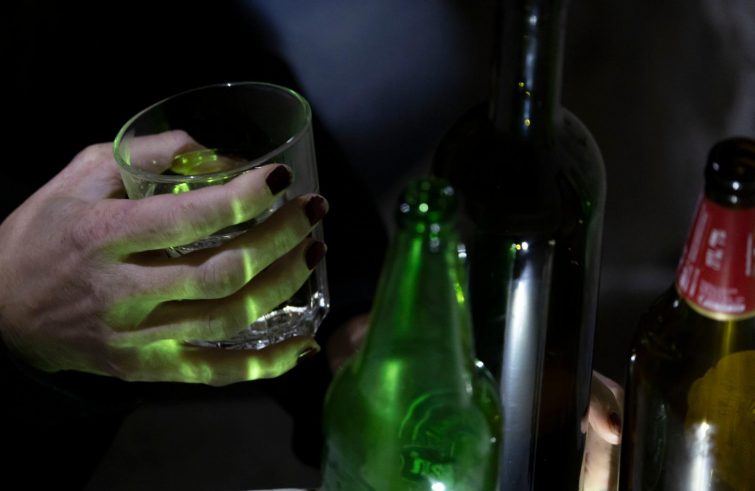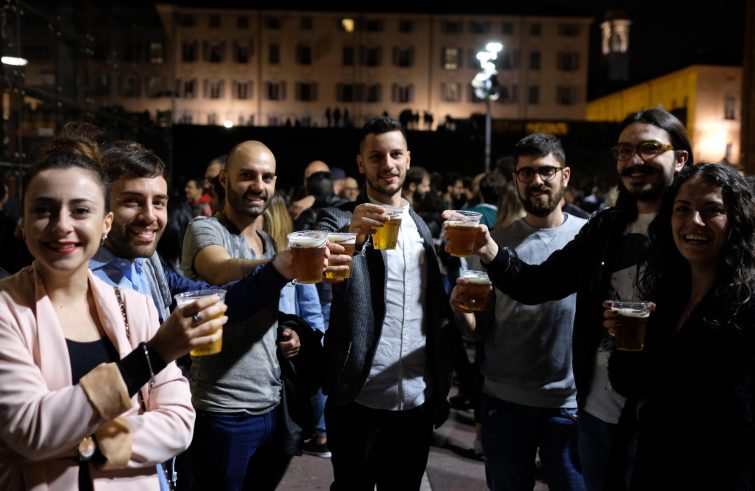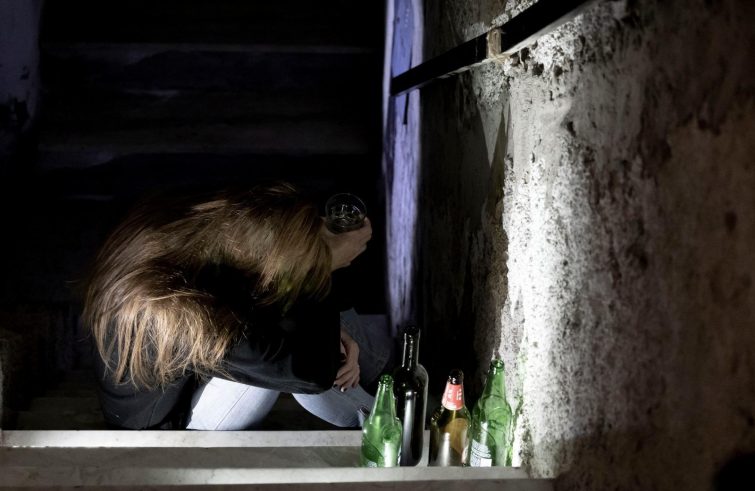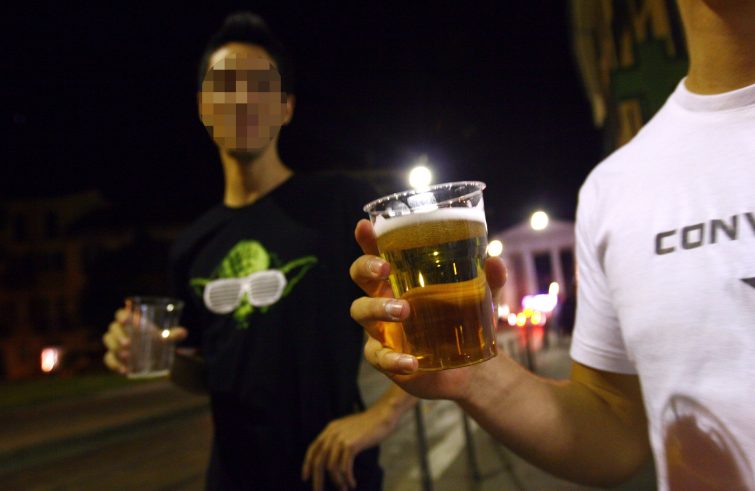
The data collected in the report to Parliament on alcohol and alcohol-related problems, presented at the end of June by the Minister of Health, Orazio Schillaci, indicate that alcohol consumption is stable in the year under review (66.4% in 2020 and 66.3% in 2021), while daily consumption (20.6% in 2020 and 19.4% in 2021) and consumption between meals (31.7% in 2020 and 30.7% in 2021) are decreasing, and occasional consumption is on the rise (45.7% in 2020 to 46.9% in 2021).
Drinking among women has continued to increase over the past decade, with the proportion of women who drink alcoholic beverages rising from 38.4 per cent to 45.1 per cent for occasional drinking and from 16 per cent to 21.7 per cent for binge drinking. Sixty-three thousand alcoholics were in alcohol treatment programmes and 45 thousand were in hospital for alcohol-related diseases. The consumption of alcoholic beverages among young people remains problematic, suggesting that this population group should be closely monitored. Risky drinking behaviour among young people is most prevalent in the 18-24 age group, with the highest levels among young boys, although the number of girls in this age group with risky alcohol consumption is steadily increasing. SIR discussed the changes in drinking habits with Mauro Cibin, psychiatrist, scientific coordinator of the Soranzo Rehabilitation Centre – 10 km from Venice – and expert in substance use disorders.
What are the key findings of the Report to Parliament?
In recent years there has been a shift from traditional Italian drinking habits, typical of Mediterranean countries, where small amounts of alcoholic beverages, especially wine, accompany food, daily meals, to consumption mainly during recreational occasions. In other words, alcohol is no longer consumed with food, but for “recreational” purposes, with the aim of getting “high”, euphoric and drunk. This change is particularly noticeable among younger people, while the older generation retains a Mediterranean way of drinking.
What we are seeing seems to be a paradox: the data show that global alcohol consumption has decreased over the last 15 years, but at the same time unhealthy drinking patterns have increased, because it is a different way of drinking, which does not necessarily mean a higher total amount of alcohol consumed, but a more dangerous way of drinking. This is particularly true for young people.
As a result, the number of accidents, crimes, fights, illnesses and acute problems typical of the Nordic way of drinking are on the increase, while the Mediterranean way of drinking, when excessive, leads mainly to chronic physical problems, including the typical alcohol-related liver disease.
 What should be done in this new scenario?
What should be done in this new scenario?
In addition to treatment programmes, preventive measures, both legislative and educational, should be put in place.
An example of a successful legislative measure is the routine alcohol testing of drivers, which has led to a steady reduction in alcohol-related road accidents. Preventive measures with an educational dimension aim to reduce hazardous alcohol consumption among consumers, especially young people. In order to be successful, this type of prevention should be carried out extensively in young people’s social environments, such as schools and sports venues, but this is not happening.
There is another aspect that should always be remembered: alcohol consumption among young people is not an isolated phenomenon, but is often part of a vast and changing pattern of pathological behaviour, ranging from alcohol to drug addiction, eating disorders, psychological disorders related to depression, violent and antisocial behaviour, withdrawal behaviour, i.e. situations similar to hikikomori.
This set of situations expresses the deep malaise experienced by young people today.
It is often useless to deal with just one aspect of this constellation of problems; it is necessary to deal with all the pathological symptoms at the same time, addressing the situation as a whole.
Has this form of distress increased with COVID-19?
The research shows that a wide range of issues linked to individual distress have worsened since COVID-19. This form of distress existed before: it was not caused by COVID-19, but it was exacerbated by COVID-19.
The lockdown has worsened a whole range of pathological, worrying, deviant behaviours that are important signs of distress, especially in young people.
Do you think that the warning signs in young people are underestimated?
On the whole, parents, educators, sports coaches, doctors and psychologists are now fairly well informed and concerned about the warning signs. But they often don’t know what to do because
building a relationship with these youngsters and helping them isn’t easy.
Do you see severe cases in your rehabilitation facility?
The Soranzo Rehabilitation Centre is a psychotherapeutic community where we receive patients with pre-existing conditions, which are the tip of the iceberg of all this distress. Observing the pathological cases gives us an insight into what is really happening, it is an observatory.
 Alcohol consumption among women is increasing…
Alcohol consumption among women is increasing…
Alcohol consumption among women and girls has been increasing over the past 20 years. Men have typically had higher rates of addiction – including alcohol, tobacco and illicit substances – but the gap has narrowed over time. Thirty years ago, one woman in ten men had a drinking problem; now it’s one woman in five men.
For girls, drinking is part of a wider problem among young people, but it often takes on different characteristics from those of boys, with serious, even psychopathological, problems that are often more severe than in boys.
From a psychological point of view, who is it easier to help? Boys or girls? Are there different ways out of addiction?
The pathways are partly different. It is important for girls to have specific programmes; in our case, we developed a therapeutic pathway “for women”, called the Frida Project.
I must also add that often the girls are very badly affected, but they have many resources: when they get into a logic of resilience, they recover very quickly and very well.
Given that young people have multiple addictions, how should they be treated in general?
The whole approach needs to change, both within the rehabilitation sector and among those working in the field. In fact, data show that the effectiveness of rehabilitation centres in dealing with these phenomena is very low.
Both public psychiatric and addiction services are quite effective with adults, but they are ineffective in first encountering and then treating the situation of young people.
A lot needs to change.
 What needs to be done to ensure effectiveness?
What needs to be done to ensure effectiveness?
A comprehensive approach is needed, including the existential issues at the root of such behaviour: psychiatric or psychological care should be combined with educational and lifestyle measures, without being based on individual pathologies.
We have seen that these situations arise with different problems, often changing over time. Tailored treatment should offer a common ‘front door’ and
a unified treatment framework.
On the contrary, public support for young people’s problems is currently divided between psychiatry, addiction and paediatric neuropsychiatry; families often have to turn to private health professionals, who in turn provide an even more fragmented response.
Secondly, we need treatment options that are tailored to the needs of young people, with a strong psychological and educational dimension. Lastly, this requires competent professionals with experience of working with adolescents.












